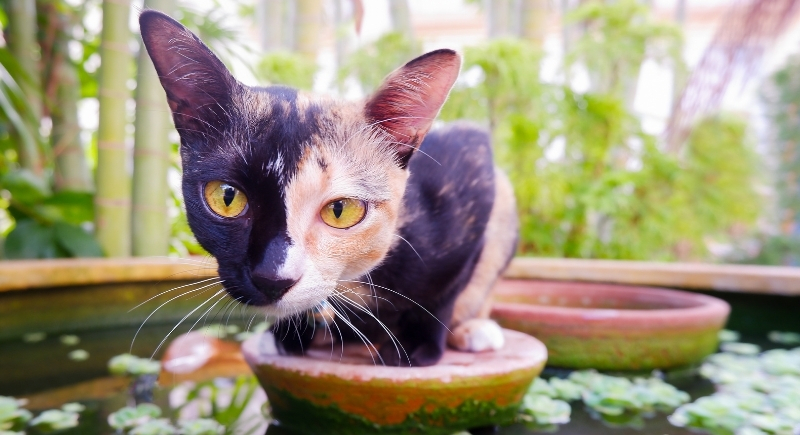What’s the Deal With the ‘Two-Faced’ Chimera Cats?
Cats with perfectly split-colored faces almost look like nature got creative on purpose. One side is dark, the other light—so precisely divided it feels intentional. The internet quickly fell in love with cats like Venus and Quimera, but their striking looks aren’t the result of filters or fancy breeding.
Some of these cats might actually be natural chimeras, a rare biological phenomenon where two embryos merge into one. Others just happen to have unusual pigment patterns. Either way, the result is something you can’t quite forget once you’ve seen it.
What Chimera Cats Actually Are
A chimera cat forms when two embryos merge early in the womb. This results in one cat carrying two distinct sets of DNA. Each set came from a different fertilized egg, which means the cat technically began as a pair of non-identical twins. As the fused cells develop into a single body, the animal may show visible traits from both original embryos.
This can include a sharply divided coat, often described as a “split-face,” where each half reflects a distinct genetic origin. Sometimes the variation spreads beyond the face and can turn up on the torso or legs. The phenomenon is rare, but not unknown in cats. The most famous examples are mostly female, which aligns with how coat color is genetically expressed in domestic cats.
Chimerism doesn’t occur because of selective breeding or environmental factors. Instead, it’s a spontaneous event during cell division. The only way to confirm this is through the genetic testing of cells from different parts of the body.
What Makes Their Appearance So Distinct

Image via Getty Images/Valeriia Kuznetsova
Many chimera cats have dramatic visual contrasts that catch attention instantly. The most iconic feature is a symmetrical face divided into two colors—frequently black and orange—with a clean line down the center. This level of contrast is unusual among most cat coat patterns.
In some cases, the effect includes heterochromia, where the eyes differ in color. Blue in one, green or yellow in the other. This adds to the illusion of dual identity. These features alone do not prove chimerism, though. Other types of cats, including tortoiseshells and calicos, can develop similarly striking physical traits without having two sets of DNA.
Why Most of Them Are Female
The coat color genes in cats live on the X chromosome. Since female cats have two X chromosomes, they carry more instructions for color variation. This leads to more frequent appearances of multi-colored patterns like those seen in tortoiseshell or calico cats. Male cats usually have a single X chromosome and one Y chromosome, so their color possibilities are more limited.
However, some male cats carry an extra X chromosome, which makes their genetic profile XXY. These cats may appear with similar patterns to their female counterparts. The condition is known as Klinefelter syndrome and typically results in infertility and other mild health complications. In cats that seem chimera-like, these chromosomal factors add another layer of complexity.
Though the presence of two X chromosomes increases the chances of dramatic coat patterns, it does not automatically result in a chimera. The biological process that leads to chimerism happens before coat color is even determined, during the earliest stages of cell development in the womb.